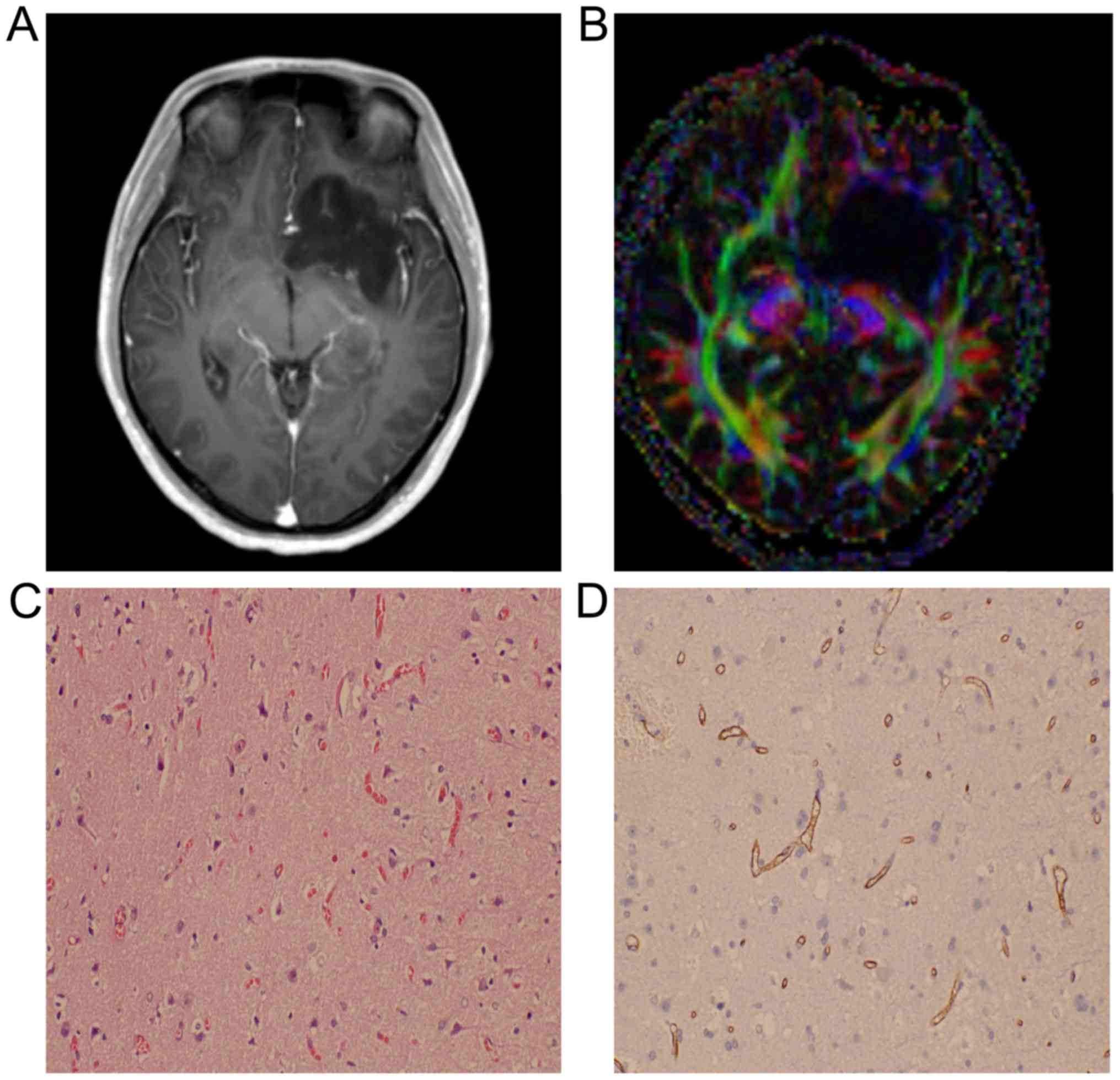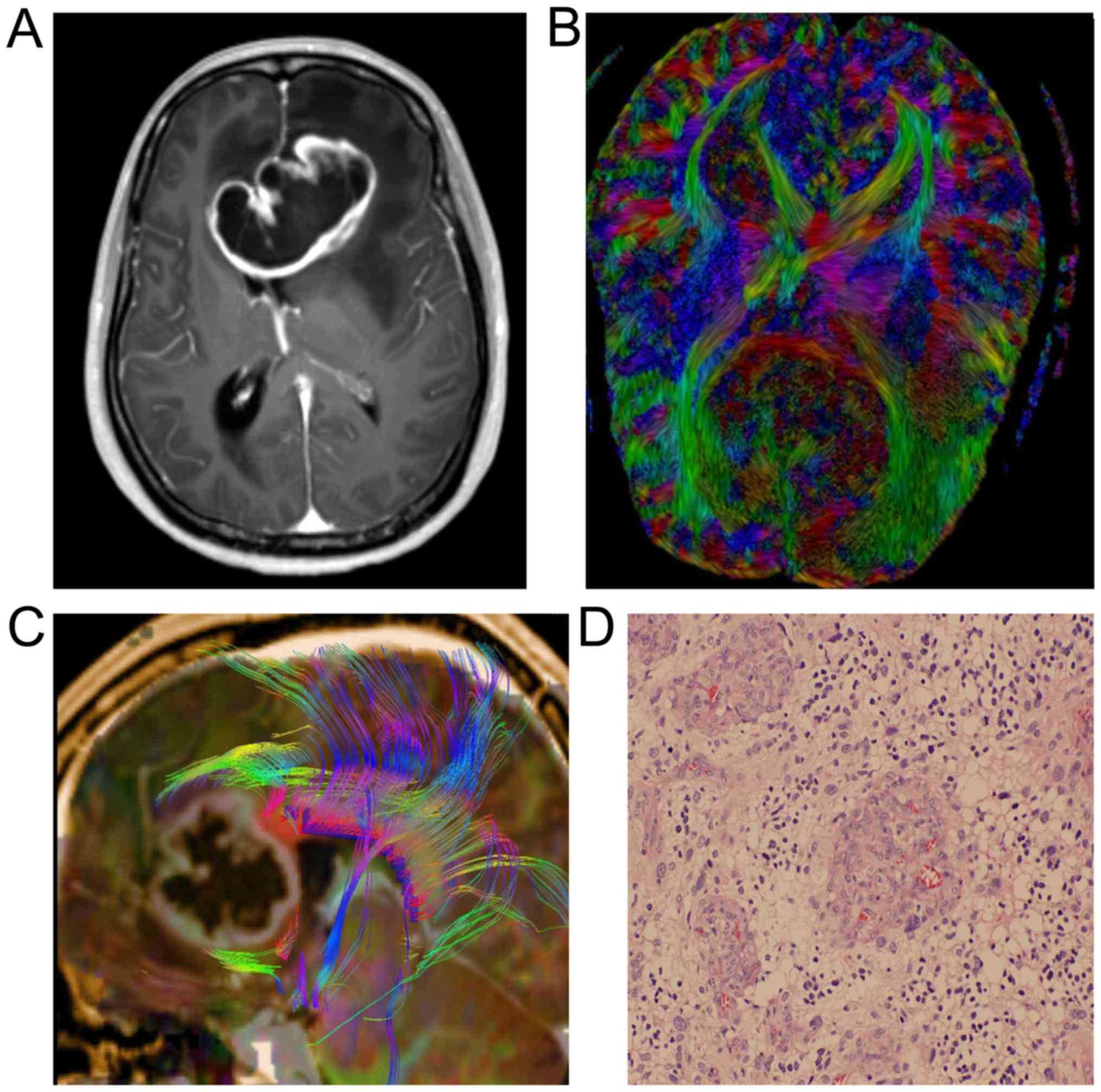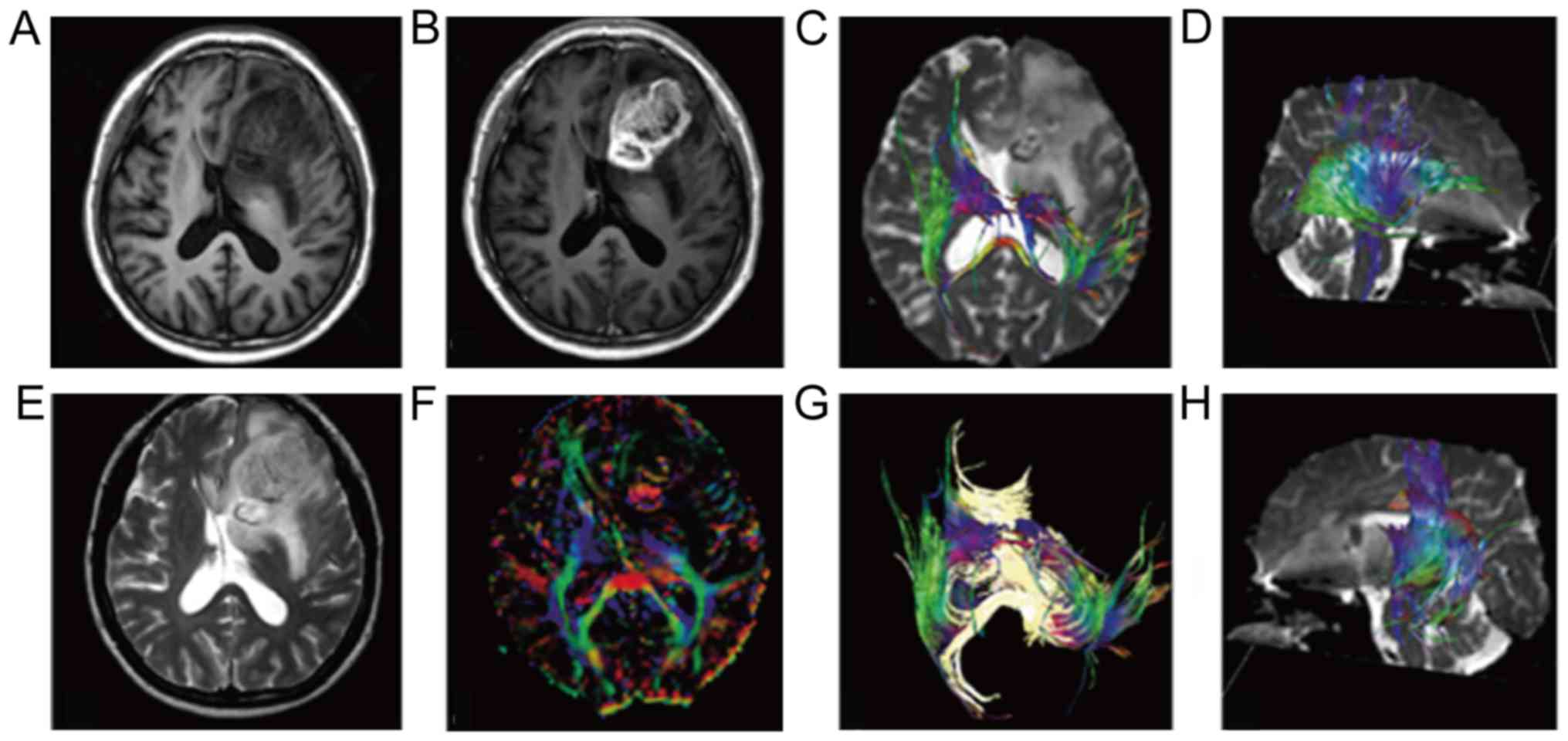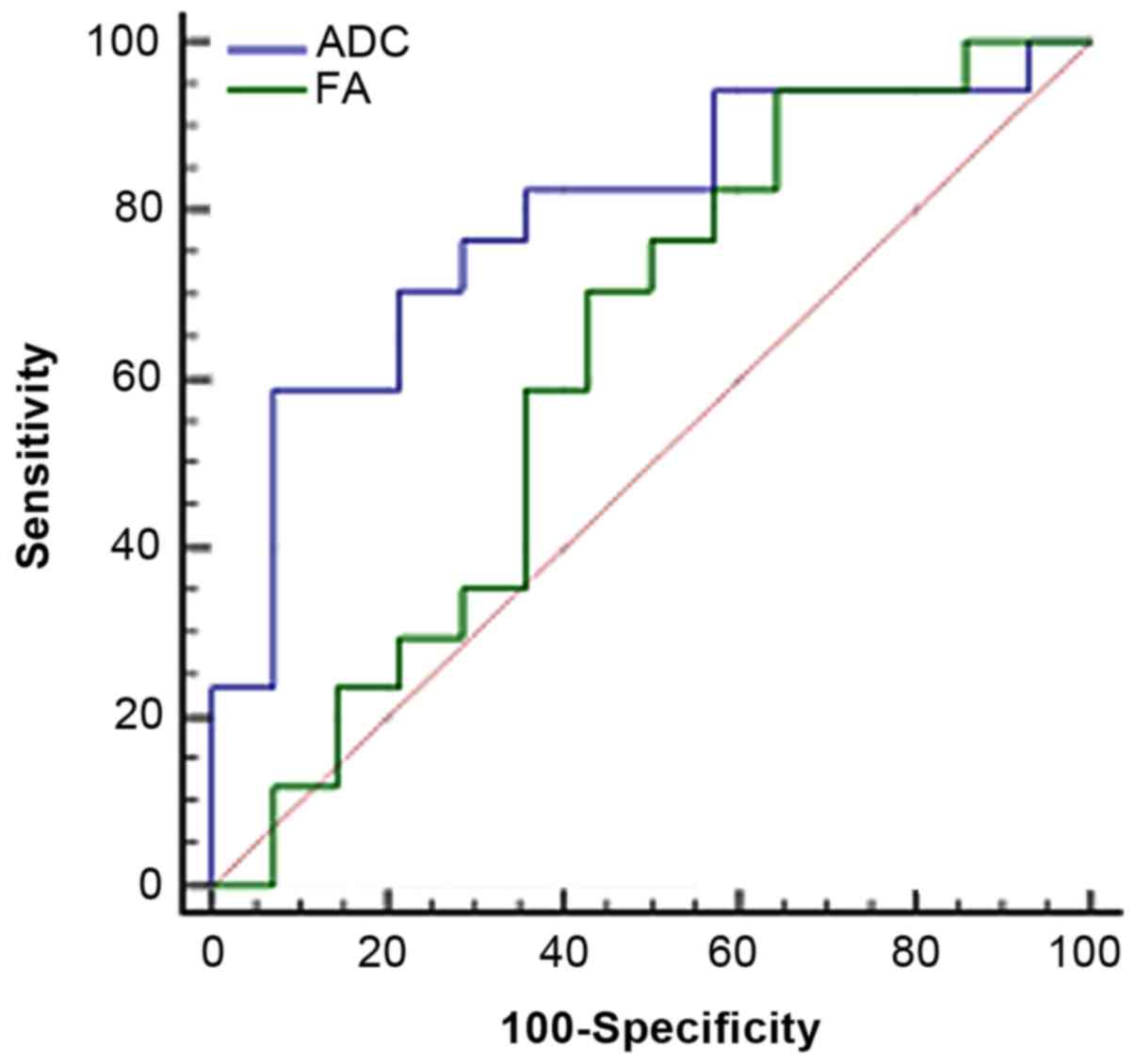Clinical application value of 3.0T MR diffusion tensor imaging in grade diagnosis of gliomas
- Authors:
- Published online on: June 13, 2017 https://doi.org/10.3892/ol.2017.6378
- Pages: 2009-2014
-
Copyright: © Shan et al. This is an open access article distributed under the terms of Creative Commons Attribution License.
Metrics: Total
Views: 0 (Spandidos Publications: | PMC Statistics: )
Total PDF Downloads: 0 (Spandidos Publications: | PMC Statistics: )
Abstract
The clinical value of MR diffusion tensor imaging (DTI) in grade diagnosis of gliomas was investigated. A total of 31 patients with glioma were administered 3.0T MR convention and DTI examination, with quantitative measurement of anisotropy coefficient fractional anisotropy (FA) and apparent dispersion coefficient (ADC) value, and the comparison of quantitative parameters of glioma between low‑ and high‑grade, which was detected by Mann‑Whitney U test. The receiver operation characteristic (ROC) curve was drawn to take the value of ADC and FA in tumor ROI as a critical point, to calculate the area under the curve and to confirm the diagnosis threshold value and evaluate its diagnostic efficiency. The FA value of 14 low‑grade glioma cases was 139.4±81.3, with an ADC value of (1.36±0.21) x10‑3 mm2/sec. The FA value of 17 high‑grade glioma cases was 103.1±41.5, with ADC value of (1.09±0.28)‑3 mm2/sec; the difference between the two groups was statistically significant (P<0.05). The ADC value was taken as the critical point to judge tumor grade and draw the ROC curve; the area under the curve was 0.79. As the diagnosis threshold value, the ADC value of 1.11x10‑3 mm2/sec was used to distinguish between low‑ and high‑grade tumor with a sensitivity of 58.8% and specificity of 92.9%. The FA value was taken as a critical point to judge tumor grade and draw the ROC curve; the area under the curve was 0.62. As the diagnosis threshold value, the FA value of 178.9 was applied to distinguish between low‑ and high‑grade tumor sensitivity of 94.1% and specificity of 35.7%. Therefore, the FA value and ADC value in DTI has an important estimated value for the pathological grade of glioma.













